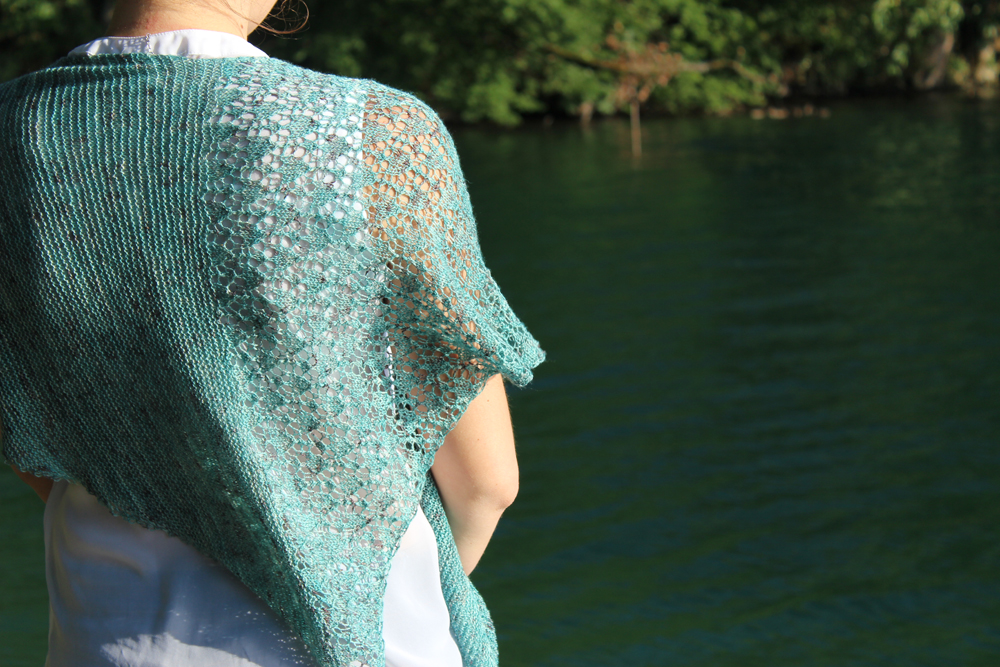
Last summer, I wrote a small serie of articles on my Patreon page. This summer, I’m reposting them here….
When the sample is finished, the work is far from done. A long period of computer work starts for me…
If I want to offer the pattern I’m working on in multiple sizes (sweaters for example), I start by grading the pattern. I have measurements tables for each size and I use them to work out all the numbers (stitches and rows) I need for the pattern, taking into account the ease and proportions I’m looking for. All those numbers are grouped into one big detailled and organized spreasheet. I also use this spreadsheet to calculate all the measurements of the final project in each size and the yardage estimates.
I then realise the schematics on a technical drawing software, keeping the proportions, with as much details as possible. If the pattern requires it, I make chartsfor specifuc stitches (lace, cables, colourwork) on another software. I export those schematics and charts in image to be able to insert them in the pattern.
When grading, shematics and charts are done, I can move onto writing the pattern (in French, as this is my first language). I take all the little notes I took while knitting the sample, the big spreadsheet from grading and I begin writing. Now, my patterns include : all the informations on the material necessary, all the sizes and measurements for each size, the schematics, help for choosing your size and adapting the pattern to your body, then the explanations for the knitting part,with different parts, as detailled and clear as possible, with all the numbers of stitches and rows for each size, the charts (if necessary) and finally, a glossary of all the abbreviations and techniques used in the pattern, with link to tutorial for some of them.
If I use a specific technique in the pattern and I don’t already offer a tutorial for it, I make a photo tutorial explainign it in detail that I publish on my website. I add the link to it in the pattern.
When the pattern in French is done writing and I have read it multiple times, I can then translate it in English. The organisation of the pattern is the same and I progress part by part to translate it in integrity. I also work out all the measurements and yardage estimates in inches/yards. I also rewrite the abbreviations and techniques glossary and translate the photo tutorial on my site if necessary.
When I’m done writing and translating the pattern, its time to send the files for the tech editing. I have 2 tech editos : Fanette DEfranoux works on the French files and Tian Connaughton on the Englis ones. The read my pattern from the first to the last character, checking everything from the writing (spelling, grammar, typing mistake) to the maths (numbers of stitches/rows, measurements…). They also highlight the parts that needs better explanations or developpements. Their work is really valuable for me as they allow me to go further in offering you the best possible patterns.
Besides the tech editing, I decided to have my patterns test knitted. Test-knit is another way to improve the pattern by having other sets of eyes looking on the pattern: when you have your needles in hand, you can spot a problem that would go unnoticed by just reading it. Ideally, I’m searching for at least one test-knitter for each size, but I can’t always find them for all of the sizes. The testers have to give reviews regularly during the test and tell me all the errors they have spotted and the questions they have while they knit the pattern. They can use the yarn they want (as long as they get the correct gauge) and the finished project is for them (I don’t have any right on it).
After the tech editing and the test-knit are finished, I make the last adjustments to the pattern before preparing for the launch…
This summer, I’m writing a series of articles about a controversial subject on my Patreon page.
Some knitters swear by them, others utterly abhor them…
Let’s talk swatches !

Comments